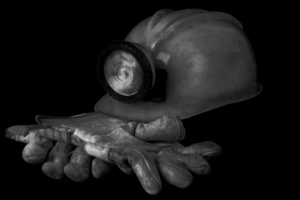 The U.S. Department of Labor's Mine Safety and Health Administration (MSHA) is requesting data, comments and information about refuge alternatives for miners in underground coal mines.
The U.S. Department of Labor's Mine Safety and Health Administration (MSHA) is requesting data, comments and information about refuge alternatives for miners in underground coal mines.
The MSHA published a notice in the Federal Register last week on refuge alternatives for miners in coal mine emergencies. The agency also announced a limited reopening of the record of the refuge alternative final rule published on Dec. 31, 2008. The 60-day comment period for both closes on Oct. 7.
Two types
There are two types of refuge alternatives: in-place shelters and mobile chambers. Since the refuge alternatives rule became effective on March 2, 2009, refuge alternatives have been placed in underground coal mines across the country.
“Responses to the broad Request for Information will assist MSHA in determining if changes to existing practices and regulations would improve the overall strategy for survivability, escape and training to protect miners in an emergency,” said Joseph A. Main, assistant secretary of labor for mine safety and health. “MSHA will review the comments to determine what further actions, if any, the agency will take.”
Court orders MSHA to explain
Additionally, on Oct. 26, 2010, the D.C. Circuit Court of Appeals issued a decision on the refuge alternative rule, holding that the secretary of labor had not adequately explained the basis for requiring motor task (hands-on), decision-making, and expectations training only annually, rather than quarterly. The court remanded the training provision and ordered MSHA to either “provide an explanation …or …reopen the record, and afford interested parties an opportunity to comment.”
The Mine Improvement and New Emergency Response Act of 2006 directed the National Institute for Occupational Safety and Health (NIOSH) to conduct research and tests concerning the use of refuge chambers in underground coal mines, and to report the results to Congress and the secretary of labor. In its report, NIOSHconcluded that refuge alternatives have the potential for saving lives of miners if they are part of a comprehensive escape and rescue plan, and if appropriate training is provided.


